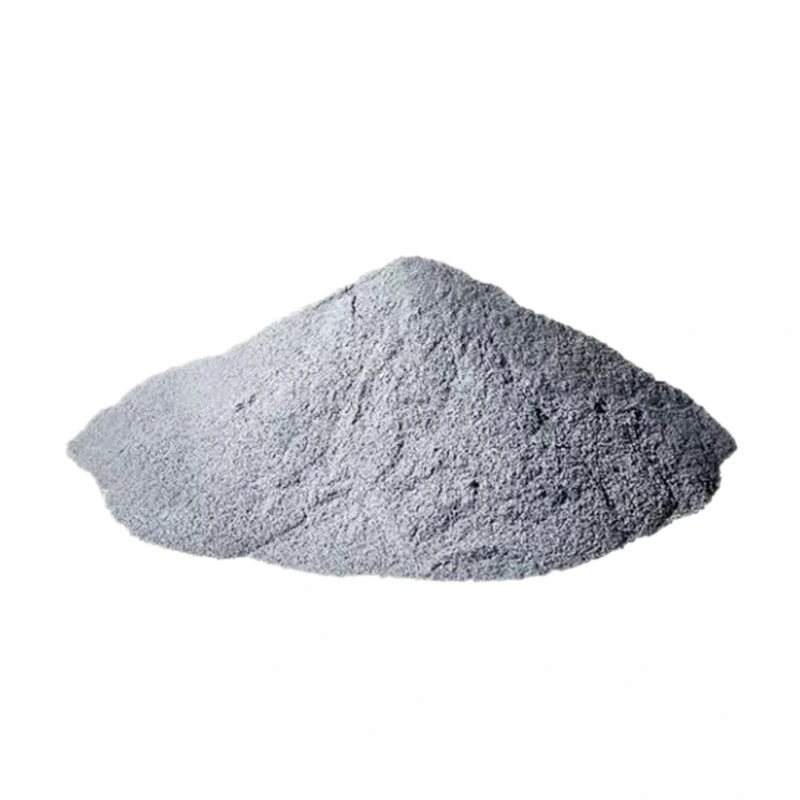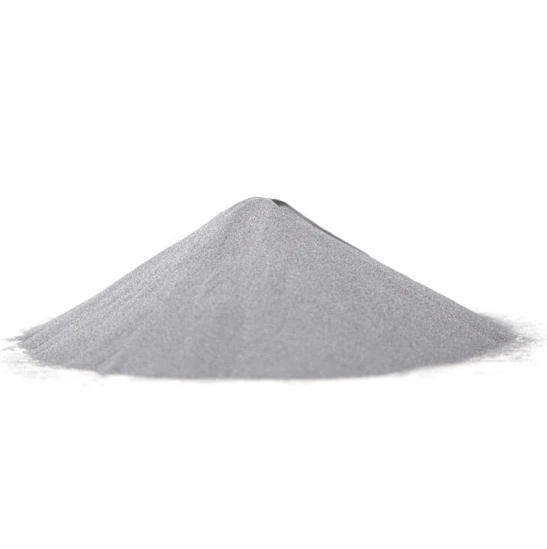Reines Wolframpulver bietet die höchste Dichte, Festigkeit und thermischen Eigenschaften unter den Metallen. Dieser Leitfaden bietet einen detaillierten Überblick über unlegiertes Wolframpulver für industrielle Anwendungen.
Einführung in reines Wolfram-Pulver
Reines Wolframpulver enthält >99,9%-Wolfram mit minimalen Verunreinigungen. Wichtige Eigenschaften:
- Extrem hohe Dichte von 19,3 g/cc
- Höchster Schmelzpunkt aller Metalle - 3422°C
- Hohe Temperaturbeständigkeit
- Ausgezeichnete Wärmeleitfähigkeit
- Niedriger Wärmeausdehnungskoeffizient
- Gute Korrosions- und Oxidationsbeständigkeit
Vorteile gegenüber legierten Pulvern:
- Hervorragende thermische Eigenschaften
- Verbesserte elektrische Leitfähigkeit
- Höhere Dichte und Reinheit
- Bessere Sinterfestigkeit
- Vermeidung von Legierungselementen
Mit seiner unübertroffenen Dichte und Temperaturbeständigkeit ermöglicht reines Wolfram Hochleistungsanwendungen in verschiedenen Branchen.

Arten von Reines Wolfram-Pulver
Verschiedene Qualitäten von reinem Wolframpulver:
Arten von reinem Wolfram-Pulver
| Typ | Reinheit | Partikelgröße | Morphologie |
|---|---|---|---|
| Reines | 99.9% W | 1-150 μm | Unregelmäßig, eckig |
| Ultrafeine | 99.9% W | <10 μm | Sphärisch |
| Nanopulver | >99,9% W | <100 nm | Sphärisch |
| Hohe Reinheit | 99.95-99.99% W | 1-45 μm | Schwammartig |
Die Reinheitsgrade reichen von 99,9% bis 99,999% Wolframgehalt. Partikelgröße, Form und Herstellungsverfahren können je nach Anwendung variiert werden.
Zusammensetzung des reinen Wolframpulvers
Typische Zusammensetzung von reinem Wolframpulver:
- Wolfram (W) - 99,9% bis 99,999%
- Sauerstoff (O) - 500-1000 ppm
- Kohlenstoff (C) - 100-300 ppm
- Stickstoff (N) - 20-100 ppm
- Wasserstoff (H) - 20-100 ppm
- Kalium (K) - 20-50 ppm
- Natrium (Na) - 10-50 ppm
Höhere Reinheitsgrade minimieren Sauerstoff und andere Zwischengitterstoffe für bessere Duktilität und Korrosionsbeständigkeit.
Eigenschaften von reinem Wolfram-Pulver
Eigenschaften von reinem Wolfram-Pulver
| Eigentum | Wert |
|---|---|
| Dichte | 19,3 g/cc |
| Schmelzpunkt | 3422°C |
| Wärmeleitfähigkeit | 173 W/mK |
| Elektrischer Widerstand | 5,6 μΩ-cm |
| Zugfestigkeit | 550-620 MPa |
| Elastizitätsmodul | 400 GPa |
| Wärmeausdehnungskoeffizient | 4,5 x 10-6/K |
Die extreme Dichte, die thermischen Eigenschaften, die Festigkeit und die Temperaturbeständigkeit machen reines Wolfram für Hochleistungsanwendungen geeignet.
Merkmale des reinen Wolframpulvers
Merkmale des reinen Wolframpulvers
| Parameter | Einzelheiten | Bedeutung |
|---|---|---|
| Partikelgröße | 1-150 μm | Kleinere Größen verbessern die Sinterung |
| Partikelform | Vielfältig - eckig, kugelförmig | Auswirkungen auf Dichte und Durchfluss |
| Scheinbare Dichte | 3-4 g/ccm | Zeigt Verdichtungseigenschaften an |
| Dichte des Gewindebohrers | 9-11 g/cc | Hohe Packungsdichte |
| Durchflussmenge | 20-25 s/50g | Messung der Fließfähigkeit des Pulvers |
| Sauerstoffgehalt | <1000 ppm | Beeinflusst Verformbarkeit und Festigkeit |
Die Kontrolle von Größenverteilung, Form, Oberfläche, Dichte und Sauerstoffgehalt ist für die Funktionalität von reinem Wolframpulver entscheidend.
Spezifikationen von reinem Wolfram-Pulver
Spezifikationen für reines Wolfram-Pulver
| Parameter | Werte | Standard |
|---|---|---|
| Wolfram-Gehalt | >99,9% | ASTM B763 |
| Partikelgröße | 1-10 μm | ASTM B213 |
| Scheinbare Dichte | >3 g/cc | ASTM B212 |
| Dichte des Gewindebohrers | >9 g/cc | MPIF 04 |
| Durchflussmenge | <25 s/50g | ASTM B213 |
| Sauerstoffgehalt | <1000 ppm | ASTM B939 |
Die Einhaltung standardisierter Spezifikationen gewährleistet die Konsistenz von Charge zu Charge und die Eignung für industrielle Anwendungen.
Partikelgrößen von reinem Wolfram-Pulver
Übliche Partikelgrößenbereiche:
Reines Wolfram-Pulver Partikelgrößen
| Größe | Beschreibung | Typische Verwendungen |
|---|---|---|
| 1-10 μm | Ultrafeine Qualität | Additive Fertigung |
| 10-25 μm | Feine Qualität | Pulverspritzgießen |
| 25-45 μm | Mittlerer Grad | Schneidewerkzeuge |
| 45-150 μm | Grobe Sorte | Schwere Wolframlegierungen |
Kleinere Partikelgrößen verbessern die Sinter- und Materialeigenschaften, verringern aber die Fließfähigkeit. Größere Partikel bieten eine bessere Packungsdichte.
Noten von Reines Wolfram-Pulver
Qualitäten von reinem Wolframpulver
| Klasse | Reinheit (%W) | Sauerstoff (ppm) | Partikelgröße (μm) |
|---|---|---|---|
| CP | 99.9 | 700-1200 | 1-150 |
| RMP | 99.95 | 400-800 | 1-45 |
| SP | 99.98 | 100-300 | 1-25 |
| EL-Grad | 99.99 | 50-150 | 1-10 |
CP - Rohes Pulver, RMP - Reaktorschmelzpulver, SP - Natriumreduziertes Pulver, EL-Grade - Hochrein
Ein höherer Reinheitsgrad reduziert Verunreinigungen und Verschmutzungen und verbessert die Leistung.
Globale Normen für reines Wolframpulver
Wichtige Normen für reines Wolframpulver:
- ASTM B763 - Standardspezifikation für reines Wolframpulver
- ISO 18274 - Chemische Analyse von reinem Wolfram-Pulver
- MPIF-Norm 55 - Werkstoffnormen für Wolframpulver
- ASTM B939 - Leitfaden zur Charakterisierung von Wolframpulver
- GB/T 4408 - Chinesischer Standard für Wolfram-Pulver
Diese helfen, die Qualität für verschiedene Anwendungen weltweit zu gewährleisten. Auch kundenspezifische Pulver können je nach Bedarf hergestellt werden.
Anwendungen von reinem Wolframpulver
Anwendungen von reinem Wolframpulver
| Industrie | Anmeldung |
|---|---|
| Luft- und Raumfahrt | Strahlungsabschirmung, Gegengewichte |
| Automobilindustrie | Schwingungsdämpfung in Fahrzeugen |
| Elektronik | Wärmesenken, Kontakte, Elektroden |
| Militär | Penetratoren mit kinetischer Energie, Kampfmittel |
| Herstellung | Schneidwerkzeuge, Matrizen, Werkzeuge |
| Öl und Gas | Bohrspülungszusatz mit hoher Dichte |
Aufgrund seiner extremen Dichte und Temperaturbeständigkeit eignet sich reines Wolfram ideal für Hochleistungsteile und -komponenten in allen Branchen.
Lieferanten von reinem Wolframpulver
Führende Lieferanten von reinem Wolfram-Pulver
| Unternehmen | Standort |
|---|---|
| HC Starck | Deutschland, USA |
| Büffel-Wolfram | USA |
| Midwest-Wolfram | USA |
| Plansee | Österreich |
| Zhuzhou Zementiertes Hartmetall | China |
Diese etablierten Hersteller bieten verschiedene Arten von reinem Wolframpulver an und können die Qualitäten je nach Reinheit, Partikelgröße und Eigenschaftsanforderungen anpassen.
Kostenanalyse von reinem Wolframpulver
Preise für reines Wolfram-Pulver
| Klasse | Preis pro kg |
|---|---|
| CP (99.9% W) | $100-150 |
| RMP (99.95% W) | $150-200 |
| SP (99.98% W) | $200-300 |
| EL-Güteklasse (99.99% W) | $300-500 |
Die Preisgestaltung hängt von der Reinheit, den Partikeleigenschaften, dem Lieferanten und dem Auftragsvolumen ab. Die Preise sind höher für feinere Partikelgrößen und höhere Reinheit.
Vor- und Nachteile von reinem Wolframpulver
Vorteile von reinem Wolfram-Pulver
- Hervorragende Wärmeleitfähigkeit und Temperaturbeständigkeit
- Verbesserte Festigkeit und Duktilität gegenüber legierten Sorten
- Höchste Dichte unter allen Metallpulvern
- Umweltverträglich und inert
- Bessere Endbearbeitung und Oberflächenrauhigkeit
- Kann aus Schrott und Abfällen recycelt werden
Beschränkungen von reinem Wolfram-Pulver
- Sehr teuer im Vergleich zu anderen Pulvern
- Schwierige Verarbeitung aufgrund des hohen Schmelzpunkts
- Geringere Bruchzähigkeit als bei legiertem Wolfram
- Begrenztes weltweites Angebot und Verfügbarkeit
- Erfordert Vorsichtsmaßnahmen bei der Handhabung wegen der Gefahr einer Staubexplosion
- Schwierig zu bearbeitende Fertigteile
Für kritische Anwendungen, bei denen die Leistung die Kosten überwiegt, ist unlegiertes Wolfram das Material der Wahl. Bei der Handhabung und Verarbeitung sind angemessene Vorsichtsmaßnahmen erforderlich.
Vergleich von reinem Wolframpulver mit anderen Metallen
Vergleich mit alternativen Metallpulvern
| Parameter | Wolfram | Molybdän | Tantal |
|---|---|---|---|
| Dichte (g/cc) | 19.3 | 10.3 | 16.6 |
| Schmelzpunkt (°C) | 3422 | 2617 | 2996 |
| Wärmeleitfähigkeit (W/mK) | 173 | 138 | 57 |
| Elektrischer Widerstand (μΩ-cm) | 5.6 | 5.7 | 13 |
| Preis pro kg | $100-$500 | $30-$100 | $250-$500 |
Wolfram übertrifft andere Refraktärmetalle bei wichtigen thermischen und mechanischen Eigenschaften, ist aber teurer.

FAQs
F: Wie wird reines Wolframpulver hergestellt?
A: Reines Wolfram wird hauptsächlich durch Reduktion von Wolframoxid mit Wasserstoff hergestellt. Durch weitere Schritte wie Zerkleinern, Mahlen, Glühen und Mischen werden die gewünschten Pulvereigenschaften erzielt.
F: Wozu wird reines Wolframpulver verwendet?
A: Zu den wichtigsten Anwendungen gehören Strahlenschutz, Gegengewichte, Werkzeuge, Schneidwerkzeuge, Schleifmittel, schwere Wolframlegierungen, elektrische Kontakte und Heizelemente.
F: Welche Vorsichtsmaßnahmen sind bei der Arbeit mit Wolframpulver erforderlich?
A: Wolframpulver birgt Explosions- und Inhalationsrisiken, die Schutzkleidung, Belüftung und Inertgas-Handschuhkästen für die Lagerung und Handhabung erfordern. Geeignete Brandschutzmaßnahmen sind unerlässlich.
F: Welche verschiedenen Partikelgrößen sind für reines Wolframpulver erhältlich?
A: Die Partikelgrößen reichen von 1-10 Mikrometer für ultrafeine, 10-25 Mikrometer für feine, 25-45 Mikrometer für mittlere und 45-150 Mikrometer für grobe Fraktionen, je nach Anwendungsanforderungen.
F: Ist reines Wolframpulver teurer als Wolframkarbid?
A: Ja, reines Wolframpulver kostet 2-4 mal mehr als Wolframkarbidpulver. Allerdings rechtfertigen Eigenschaften wie höhere Dichte und elektrische/thermische Leitfähigkeit die Mehrkosten.
F: Welche Reinheitsgrade sind im Handel erhältlich?
A: Übliche Reinheitsgrade sind 99,9% (CP-Güte), 99,95% (RMP-Güte), 99,98% (SP-Güte) und 99,99% (EL-Güte) Wolframgehalt. Eine höhere Reinheit erhöht die Kosten weiter.
F: Kann reines Wolframpulver in 3D gedruckt werden?
A: Ja, hochreine Wolframpulver im Bereich von 10 bis 45 Mikron können bei entsprechender Parameteroptimierung für das Laser-Pulverbettschmelzen und die additive Fertigung mittels Binder-Jetting verwendet werden.
F: Welche Nachbearbeitungsschritte werden bei Teilen aus reinem Wolfram durchgeführt?
A: Gesinterte Wolframkomponenten werden durch Schleifen, Läppen, Polieren und andere Methoden fertiggestellt, um enge Maß- und Oberflächentoleranzanforderungen zu erfüllen.






